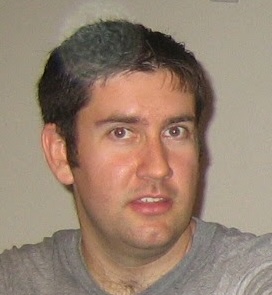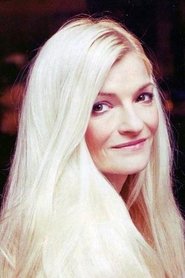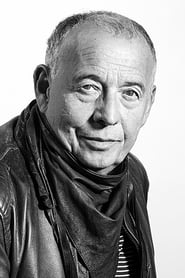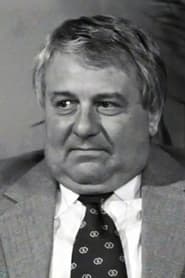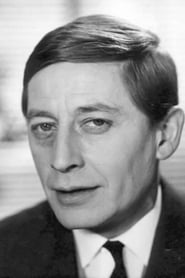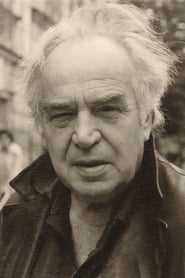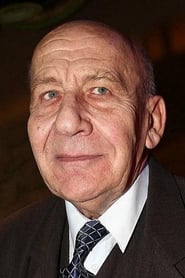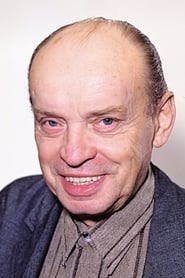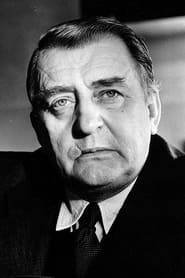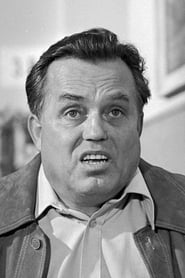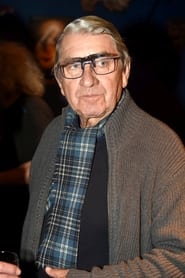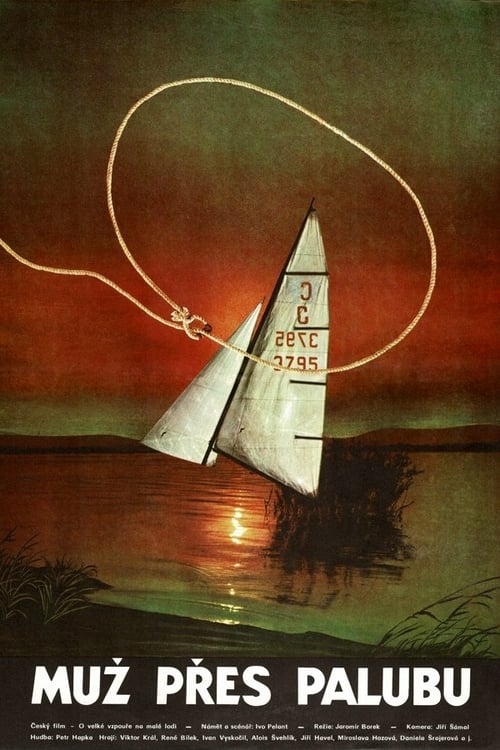
Ask Your Own Question
What is the plot?
The Last One Will Go to Hell (1982) – Complete Plot Narrative
The film opens on the eve of the Thirty Years' War, a period that casts a long shadow of uncertainty and dread across the Bohemian countryside. The exact date remains unspecified, but the historical context is unmistakable--this is the early seventeenth century, a time when war, famine, and supernatural terror walk hand in hand through the villages of Central Europe. In a small, isolated settlement nestled among dense forests and rolling hills, the villagers sense that their world is about to change forever.
The story begins in the flickering light of a communal fire, where the village elder, Old Man Václav, sits surrounded by the gathered community. His weathered face is creased with age and worry as he recounts an ancient legend that has been passed down through generations. His voice carries the weight of centuries as he speaks of a cursed bottle hidden somewhere in the surrounding forest--a bottle that possesses extraordinary power. "There is a bottle," he tells the assembled villagers, his eyes reflecting the firelight, "hidden in the forest, that can grant one wish. But beware--the last one who uses it will go to hell." The phrase hangs in the air like a curse itself: The last one will go to hell. It becomes a mantra, a warning, a prophecy that will echo throughout the entire narrative.
Among those listening is Jan, a young boy whose eyes shine with curiosity and wonder. He is first seen helping his father with farm chores earlier in the day, showing the innocence of youth and a fascination with the local legends and stories of magic that permeate his village. His mother, Barbora, is a kind but perpetually worried woman, seen preparing food and tending to the household with the careful movements of someone who knows hardship intimately. She watches her son with a mixture of love and apprehension, sensing that his curiosity might lead him into danger.
Also present at the fire is Father Petr, the village priest. He is a man caught between two worlds--the spiritual authority of the Church and the deep superstitions of his flock. He is skeptical of the supernatural tales, yet deeply concerned about the moral state of his community. When Old Man Václav finishes his story, Father Petr rises and addresses the villagers with stern conviction. "In times of darkness," he proclaims, "we must not turn to false gods or cursed relics. We must place our faith in the Almighty and resist the temptations of forbidden knowledge." His words are meant to comfort, but they seem only to deepen the anxiety in the room.
Karel, a local hunter and Jan's older friend, listens to these warnings with a mixture of skepticism and intrigue. He is a rugged man, practical and self-reliant, introduced earlier in the day tracking game through the forest with the skill of someone who has spent his entire life in the wilderness. Karel represents a different kind of courage--the courage of action rather than faith. When the gathering disperses, he exchanges a meaningful glance with Jan, a look that suggests both of them are thinking the same thing: what if the bottle is real?
The village itself is a tightly-knit community of perhaps fifty souls, built around a small church with a wooden cross, a communal well that serves as the heart of daily life, and scattered houses with thatched roofs. The forest surrounds everything, dense and mysterious, filled with ancient trees and hidden paths. It is said to be haunted, and the villagers rarely venture deep into its interior after dark. The well is where the women gather to draw water and exchange gossip, where the children play, and where the community comes together to celebrate or mourn.
Days pass, and the atmosphere in the village grows increasingly tense. Rumors of the approaching war intensify, and with them comes a sense of impending doom. The villagers begin to argue among themselves about whether they should flee or stay and defend their homes. Some suggest that the curse of the bottle might be connected to the coming conflict--that perhaps the bottle itself has drawn evil to their doorstep.
Then, without warning, Old Man Václav dies.
He is found in his small cottage, sitting in his chair by the window, as if he has simply fallen asleep. But he does not wake. The village women prepare his body for burial, and Father Petr conducts a solemn funeral service. The official cause of death is attributed to natural causes--he was old, after all, and his heart simply gave out. But the villagers whisper among themselves. Some believe his death is a sign, a warning from beyond. Others think the curse has already begun to claim its victims. Jan attends the funeral, standing beside his mother, and he cannot shake the feeling that Old Man Václav's death is connected to the bottle he spoke of so urgently.
A week after Václav's funeral, Karel decides to venture into the forest. He tells Jan that he is going to hunt, but there is something in his eyes that suggests a different purpose. Jan wants to follow him, but his mother forbids it, sensing danger. Karel disappears into the trees at dawn, and he does not return that night. The next morning, search parties are organized. Father Petr leads one group, while the other able-bodied men of the village form another. Jan insists on joining the search, and this time his mother, frightened and desperate, allows it.
They find Karel's body in a clearing deep in the forest, near a hollow tree marked with a strange carved symbol. His body is torn and bloodied, as if he has been attacked by a wild animal--perhaps a wolf or a bear. But there are signs of a struggle that suggest something more than animal violence. His hands are clenched, and there are deep scratches on his arms, as if he has been fighting something he could not see. Most disturbing of all, clutched in his right hand is a small, ornate bottle made of dark glass, with the same carved symbol that marks the tree.
Father Petr picks up the bottle carefully, as if it might burn him. He recognizes the symbol immediately from the ancient texts he has studied in the church library. His face goes pale. "This is it," he whispers. "This is the cursed bottle." Jan reaches for it, but Father Petr pulls it away. "Do not touch it, boy. This object has already claimed a life."
The villagers carry Karel's body back to the village in shocked silence. The funeral is held two days later, and the entire community gathers to pay their respects. But now the mood is different--no longer is there doubt about the curse. Karel's death is seen as proof of its reality. Father Petr keeps the bottle locked in the church, hidden in a wooden box beneath the altar. He tells no one where it is, but everyone knows it is there.
In the days following Karel's death, suspicion and fear grip the village. Some of the villagers begin to whisper that perhaps Jan was involved in Karel's death, that perhaps the boy had used the bottle to wish for his friend's demise. After all, they reason, Jan was always curious about the bottle, always asking questions. The whispers grow louder, and soon a group of angry men confronts Jan in the village square. They demand to know what he knows about Karel's death and the bottle.
But Father Petr intervenes, stepping between Jan and the mob. "Enough!" he commands, his voice carrying the authority of the Church. "This boy is innocent. We must seek the truth, not blame the innocent for the evil that surrounds us. Karel died because he was foolish enough to seek out the bottle. His death is a warning to us all--a warning not to meddle with forces we do not understand."
The crowd disperses, but the damage is done. Jan is now viewed with suspicion by many in the village. He becomes isolated, spending more and more time alone in the forest, wrestling with his thoughts and his guilt. He feels responsible for Karel's death, even though he had nothing to do with it. He begins to have dreams--vivid, terrifying dreams in which he sees Karel's face twisted in agony, and hears a voice calling to him from the darkness.
One night, Jan ventures deep into the forest, drawn by something he cannot explain. He finds himself at the hollow tree where Karel's body was discovered. The carved symbol seems to glow faintly in the moonlight. As he approaches the tree, a figure materializes before him--a shadowy, translucent form that hovers just above the ground. It is the spirit of a man, his face twisted in anguish, his eyes burning with an inner fire.
"Do not come closer," the spirit warns, its voice like wind through dead leaves. "I am cursed to guard this place, cursed to warn those who would seek the bottle. I was the last one to use it, many years ago. I wished for wealth and power, and the bottle granted my wish. But the price was my soul. I have been trapped here ever since, neither living nor dead, forced to watch as others make the same mistake I made."
Jan is frozen with fear, but he finds his voice. "Who are you?" he asks.
"I am no one," the spirit replies. "I am what remains of a man who was too greedy, too ambitious. My name has been forgotten, erased by the curse. But I remember the pain, the agony of being damned. I remember the moment I realized what I had done, when the bottle's power turned against me and I felt my soul being torn from my body."
"Can the curse be broken?" Jan asks desperately.
"Only if the bottle is destroyed," the spirit says. "But it cannot be destroyed by ordinary means. It must be shattered by someone who is willing to sacrifice everything--someone pure of heart, someone who understands the true cost of the curse."
The spirit begins to fade, and Jan calls out, "Wait! Tell me more! How can I--"
But the spirit is gone, leaving Jan alone in the forest with only the sound of the wind and his own racing heartbeat.
Jan returns to the village and goes directly to the church. He finds Father Petr in the sanctuary, kneeling in prayer before the altar. When the priest sees Jan, he rises slowly, as if the weight of the world is pressing down on his shoulders. Jan tells him everything--about his encounter with the spirit, about the warning, about the possibility of destroying the curse.
Father Petr listens carefully, and when Jan finishes, the priest nods slowly. "I have been studying the ancient texts," Father Petr says, gesturing toward a pile of old books on a wooden table. "I have learned much about the bottle and its history. It was created centuries ago by a sorcerer who sought to give mankind a gift--the power to have one wish granted. But the sorcerer was cruel, and he built a terrible price into the gift. The last person to use the bottle would be damned to hell, their soul trapped in eternal torment. The sorcerer believed this would teach mankind a lesson about greed and ambition."
"Then we must destroy it," Jan says with determination.
"Yes," Father Petr agrees. "But I fear it will not be easy. The curse is powerful, and it will resist destruction. We must prepare ourselves spiritually and mentally for what is to come."
Over the next several days, Father Petr and Jan work together to prepare for the confrontation with the curse. They fast and pray, and Father Petr teaches Jan ancient rituals and prayers that are said to have power over supernatural forces. The priest also tells Jan about the history of the bottle--how it has passed from hand to hand throughout the centuries, always leaving a trail of death and destruction in its wake. Some of the most famous figures in history, Father Petr suggests, may have used the bottle and paid the ultimate price.
Meanwhile, the village continues to deteriorate. The news of the approaching war becomes more concrete--soldiers have been spotted on the roads leading to the village, and refugees are beginning to arrive, fleeing the conflict. The villagers are torn between preparing for war and dealing with the supernatural threat in their midst. Some suggest abandoning the village entirely and fleeing to the mountains. Others argue that they should stay and fight, that the bottle is their real enemy, not the soldiers.
Barbora, Jan's mother, becomes increasingly worried about her son. She can see that he is being consumed by the burden of the curse, that he is spending all his time with Father Petr, preparing for something she does not fully understand. She tries to convince him to leave the village, to escape to safety before the war arrives. But Jan refuses. He knows that he has a responsibility to his community, and he cannot abandon them.
One night, as Jan is leaving the church after his studies with Father Petr, he encounters a group of villagers who are angry and frightened. They have decided that the only way to break the curse is to perform a ritual sacrifice--to offer up a life to appease the evil spirits that surround the bottle. They suggest that perhaps Jan himself should be the sacrifice, given his connection to the curse and his isolation from the community.
Father Petr emerges from the church and confronts the mob. "This is madness!" he cries out. "We will not resort to murder and human sacrifice. That is the path of darkness, not the path of faith. If we do this, we will be no better than the sorcerer who created the curse in the first place."
But the villagers are beyond reason, driven by fear and desperation. They begin to close in on Jan, their faces twisted with rage and terror. Father Petr steps forward, placing himself between Jan and the mob, and begins to recite prayers in Latin, his voice growing louder and more powerful. The villagers hesitate, confused and frightened by the priest's intensity. In that moment of hesitation, Jan grabs Father Petr's hand, and they run toward the forest.
They flee into the darkness, the angry shouts of the villagers echoing behind them. Father Petr and Jan run until they can run no more, collapsing in a small clearing surrounded by ancient trees. They are both gasping for breath, their hearts pounding in their chests.
"We cannot go back," Father Petr says, his voice heavy with resignation. "The village has turned against us. Fear has consumed them, and they are no longer capable of reason or compassion."
"Then we will do this alone," Jan says with quiet determination. "We will find the bottle and destroy it, and we will save the village whether they want to be saved or not."
They make their way back to the hollow tree where Karel's body was found. Father Petr has brought with him a small wooden box containing the cursed bottle, which he had retrieved from the church before they fled. He also carries a hammer and a chisel, tools that he hopes will be sufficient to destroy the bottle.
As they approach the tree, the air grows cold, and a thick fog begins to roll in around them. The spirit appears again, materializing before them with an expression of anguish and desperation. "You cannot destroy the bottle," the spirit warns. "It is indestructible. Many have tried, and all have failed. The curse is eternal, and it will consume you both."
"We must try," Father Petr says, stepping forward with the hammer raised. "For the sake of the village and for the salvation of your soul, we must try."
The spirit lets out a terrible cry, a sound like the wailing of the damned, and the forest seems to shake. Trees sway violently, and the ground trembles beneath their feet. Father Petr raises the hammer and brings it down against the bottle with all his strength.
The bottle shatters.
For a moment, there is complete silence. Then, a blinding light erupts from the fragments of the bottle, filling the entire forest with a brilliance that is almost unbearable to look at. The spirit lets out one final, anguished cry, and then it begins to dissolve, its form becoming transparent and then vanishing entirely. The light fades, and the forest returns to normal--the fog lifts, the wind dies down, and the trees stop swaying.
Father Petr and Jan stand in the clearing, staring at the fragments of the bottle scattered on the ground. They are both trembling, overwhelmed by what they have just witnessed. Father Petr falls to his knees and begins to pray, tears streaming down his face. "Forgive us," he whispers. "Forgive us for the sins of mankind, for the greed and ambition that led to the creation of this curse."
But as Father Petr is praying, something terrible happens. The priest suddenly clutches his chest, his face contorting in pain. He gasps for breath, his body convulsing. Jan rushes to his side, cradling the priest in his arms. "Father Petr! What is happening? What is wrong?"
"The curse," Father Petr gasps, his voice barely audible. "It is still alive. It has transferred to me. I was the last one to use the bottle--I struck the final blow. I am the last one, and now I must pay the price."
"No!" Jan cries out in desperation. "There must be another way! There must be something we can do!"
But there is nothing. Father Petr's eyes begin to glaze over, and his breathing becomes shallow. "Listen to me, Jan," he says, his voice growing weaker. "You must return to the village. You must tell them that the curse has been broken, that they are safe. Tell them that I have paid the price so that they might live. Tell them to be strong, to resist the darkness that will come with the war. And tell them to remember that faith and love are more powerful than any curse."
Father Petr's eyes close, and his hand goes limp in Jan's grasp. The priest is dead.
Jan sits in the forest, holding the body of Father Petr, and weeps. He weeps for the priest's sacrifice, for Karel's death, for the suffering of the village, and for the terrible burden of knowledge that he now carries. But as his tears begin to dry, a new resolve forms within him. He understands now what Father Petr meant--that the curse has been broken, that the village is safe, and that the priest's death was not in vain.
Jan carries Father Petr's body back to the village. When the villagers see him emerging from the forest with the dead priest in his arms, they rush forward in shock and confusion. Jan tells them everything--about the curse, about the bottle, about Father Petr's sacrifice. He tells them that the curse has been broken, that they are no longer in danger from supernatural forces.
The villagers are silent for a long moment, processing what Jan has told them. Then, slowly, they begin to understand. They realize that Father Petr died to save them, that he gave his life so that they might be free from the curse. The anger and suspicion that had gripped them begins to fade, replaced by a sense of gratitude and sorrow.
Father Petr is given a hero's funeral. The entire village gathers to pay their respects, and even those who had been most suspicious of Jan now see him with new eyes--not as a threat, but as a hero who has helped to save them all. The priest is buried in the churchyard, and a simple stone is placed over his grave with the inscription: "Here lies Father Petr, who gave his life so that others might live."
In the days following Father Petr's funeral, the village begins to heal. The atmosphere of dread and fear that had gripped it for so long begins to lift. The villagers work together to prepare for the coming war, but they do so with a sense of unity and purpose that had been lacking before. They understand now that they are stronger together than they are apart, and that faith and love are indeed more powerful than fear and darkness.
Jan stands by the well one evening, looking out over the village as the sun sets in the west. His mother comes and stands beside him, placing a hand on his shoulder. "You have done well, my son," she says. "Father Petr would be proud of you."
"I hope so," Jan replies. "I hope that his sacrifice was not in vain, and that the village will remember what happened here."
"They will remember," Barbora assures him. "They will tell the story of the cursed bottle and the boy who helped to break the curse. And they will tell the story of Father Petr, the priest who gave his life so that others might live. Your name will be remembered too, Jan. You will be remembered as a hero."
As the sun disappears below the horizon, the first stars begin to appear in the sky. The village is quiet and peaceful, and for the first time in weeks, there is a sense of hope in the air. The war will come, and there will be suffering and loss. But the village has survived the curse, and they have learned that they are capable of great courage and sacrifice.
Jan turns away from the well and walks back toward his home, his mother beside him. Behind them, the church stands silhouetted against the darkening sky, a symbol of faith and hope. The cursed bottle is gone, destroyed forever, and the spirit that guarded it has been released from its torment. The curse has been broken, and the village is free.
The film ends with a final image of the village at night, the lights in the windows of the houses glowing warmly against the darkness. The camera pulls back, showing the village nestled in the valley, surrounded by the forest that had once seemed so threatening and mysterious. But now, the forest is just a forest--no longer haunted, no longer cursed. The last one has gone to hell, but in doing so, he has saved the living. The cycle of the curse has been broken, and a new chapter in the village's history has begun.
More Movies Like This
Browse All Movies →What is the ending?
In the ending of "The Last One Will Go to Hell," the main characters face the consequences of their actions throughout the film. The protagonist, who has been on a journey of self-discovery and moral conflict, ultimately confronts the antagonist in a climactic showdown. The film concludes with a sense of resolution, but also leaves lingering questions about redemption and the nature of evil.
As the final act unfolds, the protagonist, burdened by guilt and the weight of past decisions, finds themselves in a desolate landscape that mirrors their internal turmoil. The atmosphere is thick with tension, and the air crackles with the anticipation of confrontation. The protagonist's heart races, a mix of fear and determination coursing through their veins as they prepare to face the antagonist, who embodies the chaos and darkness that has plagued their journey.
In a dimly lit warehouse, the protagonist and antagonist come face to face. The antagonist, a figure shrouded in menace, taunts the protagonist, reminding them of their failures and the lives affected by their choices. The protagonist, fueled by a newfound resolve, stands firm, ready to confront the darkness that has haunted them. The dialogue is sharp, filled with emotional weight as both characters reveal their motivations and regrets.
As the confrontation escalates, physical violence erupts. The protagonist fights not just for their own survival but for the chance to reclaim their sense of self and to protect those they care about. The struggle is intense, with each blow exchanged symbolizing the larger battle between good and evil, redemption and despair. The protagonist's internal conflict is palpable; they grapple with the desire for vengeance against the need for forgiveness.
In a pivotal moment, the protagonist gains the upper hand, but instead of delivering a fatal blow, they hesitate, reflecting on the cycle of violence that has consumed them. This moment of clarity leads to a choice that defines their character: to break the cycle and seek a different path. The antagonist, sensing their vulnerability, attempts to exploit this hesitation, but the protagonist's resolve solidifies. They ultimately choose to spare the antagonist, a decision that signifies their growth and the possibility of redemption.
As the dust settles, the protagonist walks away from the confrontation, leaving the antagonist behind. The emotional weight of the moment is heavy; the protagonist is both relieved and burdened by the choice they made. They understand that the journey toward redemption is ongoing and that the scars of the past will remain, but they are determined to move forward.
In the final scenes, the protagonist is seen in a new light, perhaps standing at the edge of a cliff overlooking a vast horizon, symbolizing hope and the potential for a new beginning. The camera lingers on their face, capturing a mix of sorrow and determination. The film closes with a haunting reminder of the choices we make and their lasting impact, leaving the audience to ponder the complexities of morality and the human experience.
The fates of the main characters are intertwined with this resolution. The protagonist, having chosen a path of mercy, embarks on a journey of self-discovery and healing. The antagonist, left defeated and alone, becomes a symbol of the darkness that can consume those who refuse to change. The film ends on a note of ambiguity, suggesting that while the battle may be won, the war against inner demons continues.
Is there a post-credit scene?
The movie "The Last One Will Go to Hell," produced in 1982, does not feature a post-credit scene. The film concludes its narrative without any additional scenes or content after the credits roll. The focus remains on the story and character arcs presented throughout the film, leaving no further revelations or extensions of the plot beyond the main storyline.
How do secondary characters influence the main character's journey?
Secondary characters, such as friends and foes, serve as mirrors to the protagonist's choices, often highlighting his internal conflicts. Their interactions provide critical insights into his motivations, fears, and the consequences of his actions, ultimately shaping his path toward destruction.
What motivates the main character's descent into chaos throughout the film?
The main character, driven by a mix of desperation and a desire for freedom, finds himself increasingly entangled in a web of violence and betrayal. His internal struggle is marked by a longing for redemption, yet he is constantly pulled back into a life of crime and moral ambiguity.
How does the relationship between the protagonist and the antagonist evolve over the course of the film?
Initially, the protagonist views the antagonist as a necessary evil, someone who provides a means to an end. However, as the story progresses, their relationship becomes more adversarial, filled with tension and conflict, ultimately leading to a climactic confrontation that reveals deeper personal stakes.
What role does the setting play in shaping the characters' actions and decisions?
The gritty urban landscape serves as a character in itself, reflecting the chaos and despair that envelop the protagonists. The dark alleys and rundown buildings amplify the sense of entrapment and danger, influencing the characters' choices and heightening their emotional turmoil.
What are the key turning points that lead to the protagonist's ultimate downfall?
Several pivotal moments mark the protagonist's decline, including betrayals by trusted allies, escalating violence, and moments of moral compromise. Each turning point deepens his isolation and despair, pushing him further into a life he cannot escape.
Is this family friendly?
"The Last One Will Go to Hell," produced in 1982, is not considered family-friendly. The film contains several potentially objectionable or upsetting scenes that may be distressing for children or sensitive viewers.
-
Violence: The film features scenes of physical confrontations and violence that may be graphic or intense, contributing to a dark atmosphere.
-
Death and Despair: Themes of mortality and existential dread are prevalent, with characters facing dire situations that evoke feelings of hopelessness.
-
Substance Abuse: There are depictions of drug use and addiction, which may be troubling for younger audiences.
-
Mature Themes: The narrative explores complex and often dark themes such as betrayal, loss, and moral ambiguity, which may be difficult for children to understand.
-
Emotional Turmoil: Characters experience significant emotional distress, including despair and anger, which could be unsettling for sensitive viewers.
These elements contribute to a tone that is more suitable for mature audiences rather than children.


